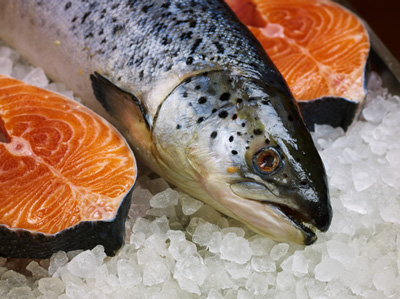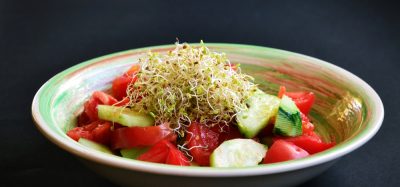Edible coatings that extend the shelf-life of fish and seafood
- Like
- Digg
- Del
- Tumblr
- VKontakte
- Buffer
- Love This
- Odnoklassniki
- Meneame
- Blogger
- Amazon
- Yahoo Mail
- Gmail
- AOL
- Newsvine
- HackerNews
- Evernote
- MySpace
- Mail.ru
- Viadeo
- Line
- Comments
- Yummly
- SMS
- Viber
- Telegram
- Subscribe
- Skype
- Facebook Messenger
- Kakao
- LiveJournal
- Yammer
- Edgar
- Fintel
- Mix
- Instapaper
- Copy Link
Posted: 15 June 2016 | Victoria White, Digital Content Producer | 2 comments
The edible coatings contain natural substances with antimicrobial properties that reduce the growth rate of spoilage microorganisms on fish and seafood…


A researcher has developed edible coatings that extend the shelf-life of fish and seafood products by up to four days.


The coatings contain natural substances with antimicrobial properties that reduce the growth rate of spoilage microorganisms on fish and seafood.
Ximena Carrión Granda developed the edible coatings at the Department of Food Technology of the Public University of Navarre (UPNA). She explained more about the coatings: “The edible films and coatings are fine, and continuous layers of edible material placed on food surfaces or separating different phases of a food system to increase product quality, extend the shelf-life or improve food safety.”
These coatings create “a barrier between the product and the surrounding atmosphere. This way, the food is protected, preventing humidity loss, reducing fat oxidation, controlling discolouration and preserving food quality and properties,” Ximena Carrión says. “In addition, the edible coatings can act as carriers of additives such as antioxidants, mineral salts or antimicrobial agents that could reduce the growth of microorganisms on product surfaces.”
Research on edible coatings has undergone considerable impulse over the last few years, given increasing demand for fresh products with minimal processing and no synthetic additives. The food industry requires emerging technologies to increase food shelf life and offer safe products. Fish and seafood are extremely perishable products due to their high surface humidity and free amino acid content. The spoilage process begins with loss of texture and the production of putrid odours caused by the development of microorganisms, as Ximena Carrión points out. Therefore, the researcher’s emerging technology could be of great use to the food industry.
The films use whey protein and chitosan
The researcher developed the edible films and coatings based on whey protein isolate and chitosan, a polysaccharide extracted from chitin, a structural element found in the shells of crustaceans . Using these, she formed coatings that were insoluble and colourless, to which she added different antimicrobial agents that are gradually released on the fish and seafood surfaces, reducing the growth rate at which deteriorating microorganisms grow, therefore extending the shelf-life.
Ximena Carrión used natural substances with antimicrobial properties, such as essential oils (from thyme and rosemary), plant extracts (from sage, oregano, garlic and rosemary) and lactic acid bacteria (L. plantarum, L. lactis and W. confusa).
These compounds were combined at different concentrations into whey protein and chitosan films and their antimicrobial activity was assessed against fourteen bacterial strains related to the spoilage and pathogenicity of fish and seafood. “The best formulations were used to assess the effect on microbial development in fresh tuna and hake fillets and peeled shrimp tails, packaged with and without air –using modified atmosphere– and stored in refrigeration for different periods of time”, the new doctor explained.
Her results showed that the films containing oregano and thyme essential oils and the extract of rosemary yielded the greatest antimicrobial effect in vitro against pathogenic bacteria (A. hydrophila, L. monocytogenes or S. Typhimurium) and deteriorating bacteria (V. alginolyticus or S. putrefaciens). On application to the different types of fish and seafood, the edible coatings were effective in slowing microbial growth and increasing the shelf-life of the treated products. Moreover, the films containing lactic acid bacteria were successfully evaluated in vitro against L. monocytogenes.










I do not think it will be an issue with Halal. As the source of Chitosan is shell of Crustacean as long as the Crustacean does not fed on any unauthorised un Halal source if it is aquacultured.
Unfortunately such a treatment is not kosher and may also be unacceptable to halal depending on the source of the chitosan. So unfortunately doing this on products that are now untreated will need proper labeling and will preclude certain markets. The whey would make the fish go from pareve to dairy and means it could not be used before a meat meal. So certainly this product has some concerns for fish. (It is fine with shellfish, because they start as non-kosher.)